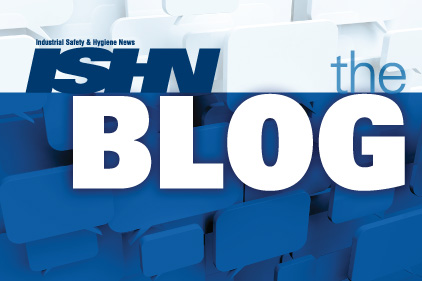 At ASSE’s Professional Development Conference for the past several years there has been a session entitled Executive Safety Summit. A panel of CEOs or senior managers and a moderator discuss their views of safety. Good stuff. Near the end of the session is the most important question: What are your recommendations for the safety professionals in attendance here today? The above title was one answer. Others are similar.
At ASSE’s Professional Development Conference for the past several years there has been a session entitled Executive Safety Summit. A panel of CEOs or senior managers and a moderator discuss their views of safety. Good stuff. Near the end of the session is the most important question: What are your recommendations for the safety professionals in attendance here today? The above title was one answer. Others are similar.
We are a 100 year+ profession. Why would a key customer, a CEO, say that about us? And he is not the only customer with that perception.
The good news is that we are regarded as knowledgeable on safety. Indeed, we have invested and continue to invest much energy and initiative towards that objective.
So what does “We need you to know us” mean?
Why would line management leadership have that perception of us? I believe that it reflects our beliefs about who we are and who they are. We effectively “wear those beliefs on our sleeves” and thereby communicate our beliefs to our customers through what we say and do.
How do you perceive your role? Our profession, unlike the public professions, e.g medicine, law, etc., is not a direct practice. We accomplish our practice objectives through others—influence, recommending, monitoring, assisting and resourcing. If you believe that safety is really only your role, then you will project that to your customers—and if they have established your staff position, most of them will know better. Your role is to help make others, not you, good at making safety happen. And when you think about it, our influence role is typically even second or three degree removed from the action that makes safety happen. When we influence a leadership team member in safety, their response is often an influence action.
There are safety professionals who say they view their role as the safety of the world’s’ workforce. May I respectfully suggest that is way beyond their pay grade. Focus on what you can logically influence—your worksite and staff—the people who make your employment possible. Forty years of OSHA standards already on the books are there to take care of the rest.
Do you believe safety is really just OSHA? Is OSHA what you constantly refer to and lean on? Could your customers really believe that you work for OSHA instead of them? OSHA is certainly a part of our professional life—but it is only basic. Our customers need to see in you that safety as a discipline and objective is more than OSHA. They know that. That is why they established your position on the staffing chart and provide you a salary and benefits. And remember, there are only probably 1 -2% of worksites that have any safety staff at all.
How do you think about your management leadership customers? Do you really, deep down view them as essential elements in your role? Or do you view them really as mostly just obstacles to progress—as you have defined progress? At times some of them can be difficult to influence. But that is an essential element of our professional role. Just remember, if it were easy to influence leadership team members for safety, they would not need us as a profession or you as an employee or consultant.
Our knowledge base is only one dimension of our profession. And it is the easiest to master. The relational, interpersonal interface with our customers is the most difficult but has the most value add for safety professionals. That is what that CEO was saying to us.
CEOs to safety pros: “ We need you to know us”

Recent Comments
In addition to the personal hardship and loss...
No one will know the answer to this...
Bad drivers don't have to ruin your day...
Healthcare workers face a number of serious safety...
In my experience, truck drivers are treated with...